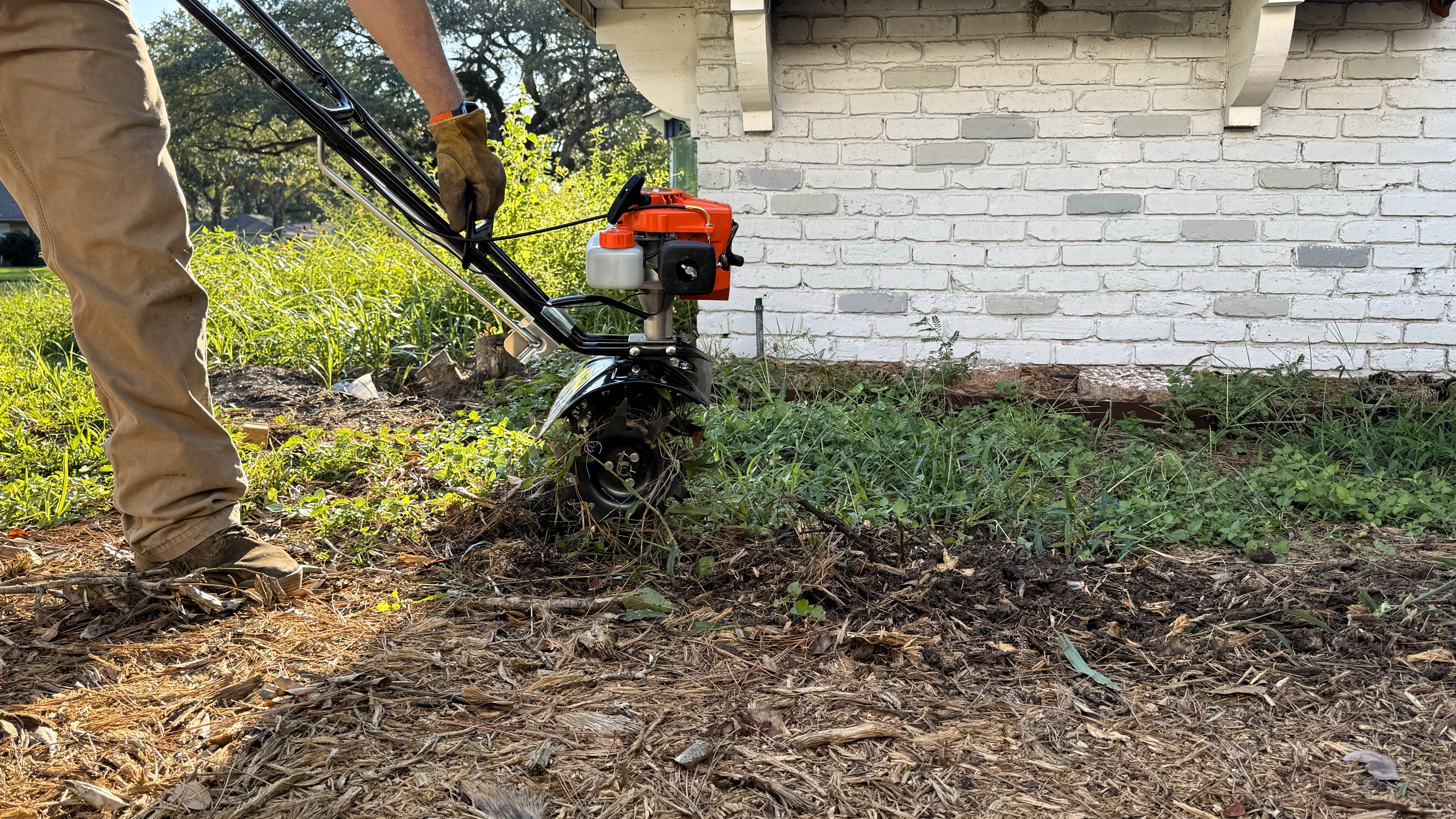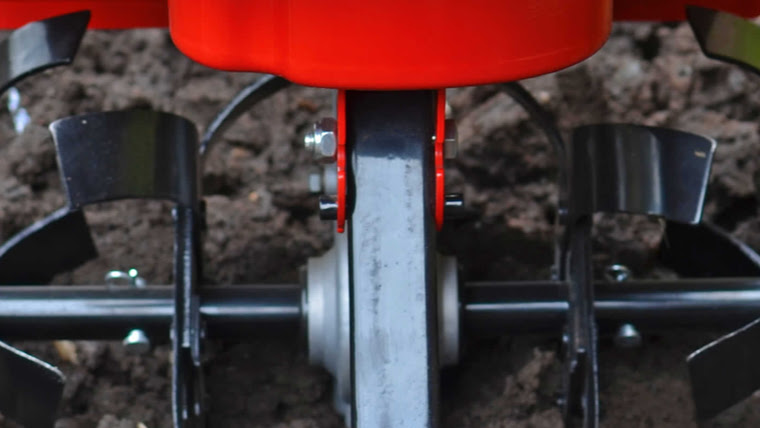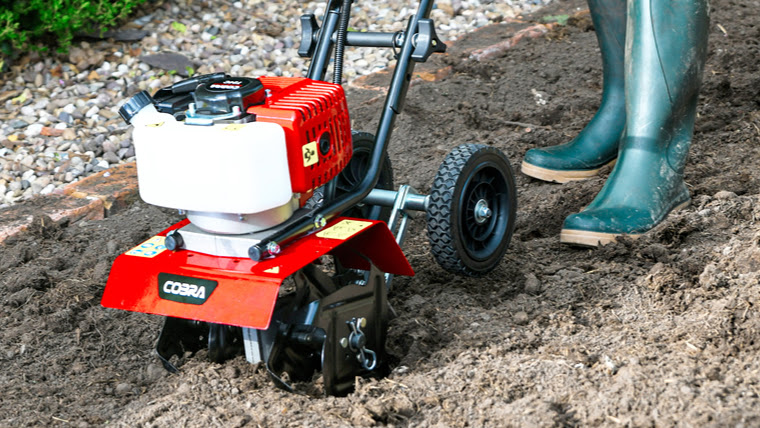Maybe you’re thinking about getting out your trusty tiller – or you might be wondering whether to buy one of the best tillers, as tested by the TTR team.
There are several potential reasons to till in your yard, from breaking up compacted soil to mixing topsoil with compost and fertilizer. If you need to turn the soil in your garden beds, no other tool will do the job as powerfully or efficiently as a tiller.
With that said, there are also some compelling reasons not to till, ranging from potential disruption to soil organisms to unsuitable soil (rocky soil is particularly hard to till). Some no-till growers entirely avoid the practice of tilling.
On balance, tilling can positively and negatively affect soil health and productivity, so it's important to think carefully before using your tiller.
In this guide, experts explain the circumstances in which tilling should be used and how to choose the right tiller for each task. Read on to learn which situations may call for a tiller – and when to take a less intensive approach.
Reasons to till the soil in your yard
1. Loosening compacted soil
The most common reason for using a tiller is to loosen compacted soil—meaning the particles are so tightly packed together that plant roots struggle to grow, take up water, and access nutrients.
“Tilling is most beneficial on compacted soil as it loosens the structure, allowing air, water, and nutrients to penetrate more effectively,” says Peter Chaloner, Managing Director of Cobra Garden Machinery.
“This is especially important in areas that have been neglected for some time and become overgrown or are walked on frequently,” he adds.

Cobra Garden Machinery is a leading manufacturer of yard tools, including mowers, line trimmers, spreaders, scarifiers – and cultivators, a type of tiller. As Managing Director of the brand, Peter Chaloner has great insight into how to care for your outdoor space.
If you mainly use a tiller to break up densely packed soil, then it’s advisable to use a high-powered model.
“Look for the horsepower specification of the tiller, which determines its power output,” says Calum Maddock, a gardening expert at HomeHow.co.uk.
“Higher horsepower is generally better for breaking up tough soil or large areas,” he adds.

Calum Maddock is a gardening expert at the home and garden advice provider, HomeHow.co.uk.
2. Creating beds for planting
A tiller is a useful tool for turning unused land into garden beds for planting vegetables, shrubs, trees, and other plants. Pour some compost and till the soil to create a rich growing medium.
“If you’re choosing a tiller to use for creating garden beds, look at the tine depth specification, which indicates how deep the tiller can break up the soil,” says Calum.
“Deeper tines are useful for turning over compacted soil or creating deep planting beds.
3. Dealing with a severe weed infestation
There are plenty of drawbacks to pulling up weeds by hand. Often, you’ll only snap off the above-ground parts of a weed, and manual progress can be very slow if you have a large garden bed to tend.
Using a tiller to pull up weeds can be far easier and more effective than hand-pulling weeds, as the machine’s deep-reaching tines will powerfully and efficiently pull up the unwanted plant.
Peter says, “Tilling is great for managing weeds as it removes them from the root.”
Tilling isn’t a perfect solution for removing weeds, as the tiller might bring dormant weed seeds to the surface while it pulls up the established plants. Some of these seeds may then germinate – so more weeds will grow.
That said, tilling is a useful option for quickly removing weeds from heavily weed-infested soil. If you want to make a garden bed available for planting as soon as possible, your tiller could help clear the way.

4. Preparing ground for seeding with grass
It’s not always necessary to use a tiller on the land before planting grass seed to grow a new lawn – but if the soil is highly compacted, then tilling it shallowly could create better conditions for the grass to get established.
Tilling can also help level out uneven terrain in your lawn area as part of a process known as ‘regrading,’ which promotes good drainage and a level appearance. If you plan on regrading your land, you should get some professional advice at the outset. Mistakes could result in pooling, flooding, and damage to nearby structures.
5. Mixing compost into soil
Soil can sometimes benefit from the addition of supplementary materials. If the land has been depleted of nutrients, adding compost (such as Espoma Organic Land & Sea ($19.24, Amazon) or fertilizer (e.g., Miracle-Gro Water Soluble All Purpose Plant Food ($11.52, Amazon) could restore the mix of nutrients and minerals needed for plants to prosper.
Many gardeners mix compost or fertilizer into the soil using a hand tool – but this approach often leaves the compost mixed into the soil irregularly, and sometimes only to a shallow depth. A tiller can mix the materials more deeply and thoroughly.
“If you’re preparing soil for planting, for example, in new gardens or when creating new borders and beds, tilling can be a great way to combine compost and fertilizers,” says Peter.
“Tilling mixes the compost or fertilizer evenly through the soil, creating thriving growing conditions for the future.”

FAQs
When is tilling not the right choice for my soil?
As we’ve seen, tilling sometimes helps soil health and productivity. If one of the scenarios highlighted in this article applies to your yard, then tilling could be an appropriate solution.
However, you should probably avoid using your tiller when there is no pressing need. Tilling harms the soil while delivering beneficial effects. In particular, the process disrupts organisms such as fungi and earthworms, which are important to soil health. It may also cause some soil loss and release of sequestered carbon into the atmosphere.
Given the collateral damage caused by tilling, it’s best to reserve the measure for the situations where you need it most rather than tilling routinely throughout the year.
Do I need to use a tiller to till my soil?
Several types of yard tools can be used for tilling. The clue’s in the name: a tiller is an obvious choice, with an efficient tilling action and sufficient robustness and power to take on rigorous tasks.
That said, tillers can be large, heavy, and hard to handle. For many users, a cultivator will prove easier to use. Cultivators differ from tillers in that they tend to be smaller, more maneuverable, and lower-powered, which makes them a great pick for domestic users with normal soil (not too compacted; not too rocky). In other regards, the two types of tools are similar.
For readers in the United States, we recommend the Sun Joe TJ603E Tiller-Cultivator ($94.99, Amazon), while UK gardeners will benefit from the Cobra T24C Petrol Cultivator (£174.99, Cobra).
You also have the option to hand-till your soil using a spade or similar tool. This approach has the benefit of causing less disruption to soil organisms, but it can be very labor-intensive if you have large garden beds that need tilling. Hand-tilling is often done via a method known as ‘double digging.’

